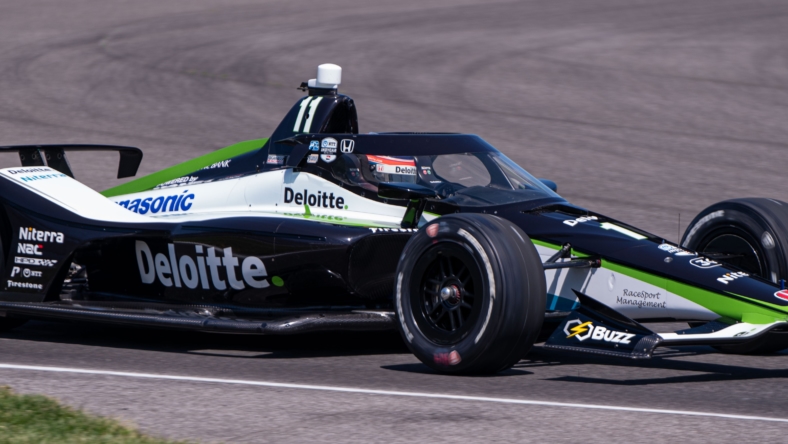Formula 1 cars move at breakneck speeds, but sometimes there are certain tools that help cars reach top speeds. That’s where DRS comes in. What is DRS in F1 racing? Below, you’ll learn about DRS and how it relates to Formula 1 racing.
What is DRS in F1?

The DRS or drag-reduction system is designed to improve aerodynamics, reducing drag and allowing racers to increase top speeds. It’s a component of F1 cars that gives drivers more control, helping them overtake other racers while improving wheel-to-wheel maneuvers.
Related: F1 schedule – Practice, qualifying, race times, and where to watch
How does DRS work in F1?
DRS essentially is an adjustable rear wing attached to the top of the vehicle’s trunk, moving in response to driver commanders throughout the race. When DRS is activated, a flap opens in the rear wing. This helps reduce drag while increasing speed.
Related: F1 results – Practice, qualifying, race results, and standings
Who triggers DRS in F1?
Drivers activate DRS through the use of a button on their steering wheel. This gives them convenient access when needed at a moment’s notice.
Related: What is the difference between F1 and IndyCar?
When can drivers use DRS in F1?
While the introduction of the DRS has been viewed as a good innovation by many within the racing industry, it cannot be used at all times during an F1 race.
Drivers are only allowed to use DRS in pre-specified activation zones. These zones are defined by the Fédération Internationale de l’Automobile (FIA) before the race begins. Even then, drivers may only use the DRS if the racer is within one second of the car ahead. DRS may not be used at all in the first two laps of a grand prix or within two laps after a Safety Car or red flag.
There are also certain scenarios when DRS is entirely deactivated due to wet conditions on the track. DRS can also be deemed inoperable if a yellow flag occurs near a DRS zone.
Related: How much do F1 drivers make?
How many times can you use DRS in F1?
There is no ‘limit’ on how many times a driver can use DRS in an individual F1 race. However, different tracks have different numbers of DRS zones, so that alone can limit the usage.
When was DRS introduced to Formula 1?
DRS came to Formula 1 in 2011 and has also been used in several other racing sectors. This includes the Formula Renault 3.5, the Deutsche Tourenwagen Masters, Super Formula, and much more. Some drivers view the introduction of DRS as controversial or even a ‘gimmick’ since it makes life easier for racers.
Related: American F1 drivers: See which Americans race F1 now and in the past
